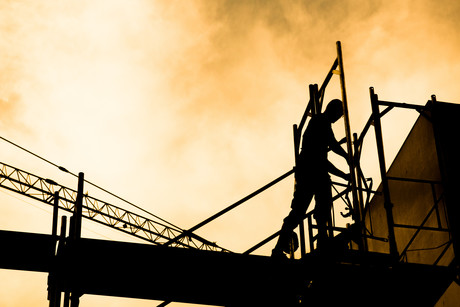Scaffolding injuries result in safety inspections

A number of recent injuries and accidents on scaffolding have led to WorkSafe inspections being carried out in Victoria.
Inspectors will visit construction sites during July and August to ensure that the correct safety procedures are being followed.
WorkSafe has investigated 13 scaffold-related incidents since April. 10 of these resulted in injuries to workers.
In one incident, a painting contractor suffered a fractured cheek and a broken wrist when he fell through a scaffold after two planks had been removed by other contractors.
Other scaffold-related incidents include a worker being struck on the head by a scaffold gate that fell almost 4 m; a plumber falling almost 2 m to the ground when a scaffold plank moved; and a worker’s head being crushed against a guardrail by a timber frame being lifted by a telehandler.
During early July, three levels of scaffolding from a demolition site in North Melbourne collapsed onto a footpath and road. Fortunately, no one was injured. Meanwhile, in April a scaffold plank fell approximately 2.4 m into a public area.
WorkSafe Construction Program Manager Dermot Moody said poorly built or maintained scaffolding was an ongoing issue.
“We know that it only takes one missing handrail or the removal of a scaffold plank for a worker to fall and sustain life-threatening injuries — or worse,” he said.
“Every builder or principal contractor must ensure that scaffolds on their site are monitored and maintained to ensure safe access.”
Tips for maintaining safe scaffolds include:
- Inducting all workers into the site rules for scaffolds, such as no unauthorised modifications/alterations are to be made to scaffolds
- Providing warning signs and barriers to restrict access to incomplete scaffolds
- Using scaffolding only for the purpose for which it was designed
- Identifying, removing or replacing damaged scaffolding
- Ensuring scaffolding is erected by an appropriately trained/licensed person
- Maintaining ‘no-go zones’ around powerlines during scaffold erection and dismantling activities
“WorkSafe wants every builder, contractor, self-employed person and worker to recognise and understand the risks associated with unsafe scaffolding,” Moody said.
Diversity and inclusion program launched for trucking industry
Teletrac Navman and the Australian Trucking Organisation have expanded their diversity and...
Safe and sound: SafeWork SA launches hearing loss campaign
Inspectors from SafeWork SA will visit workplaces across the state as part of a six-month...
Campaign looks into security on WA construction sites
WorkSafe WA has launched a campaign to address security issues across the state's...










